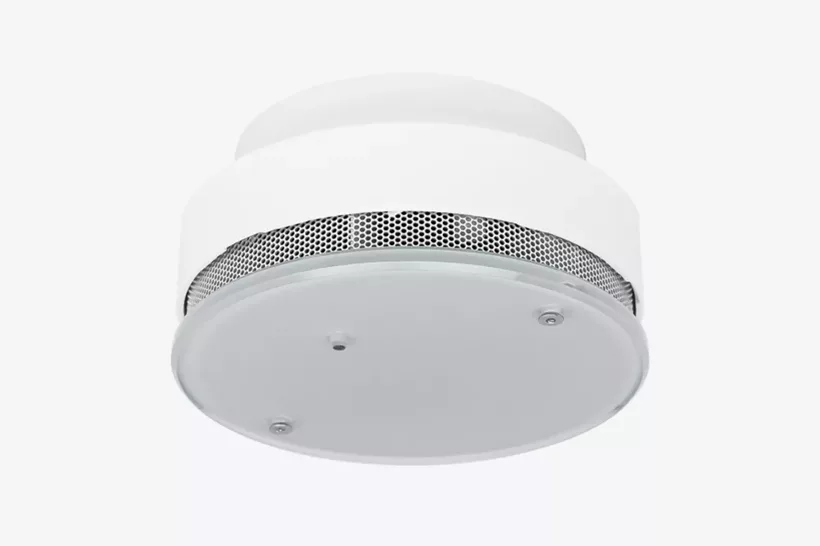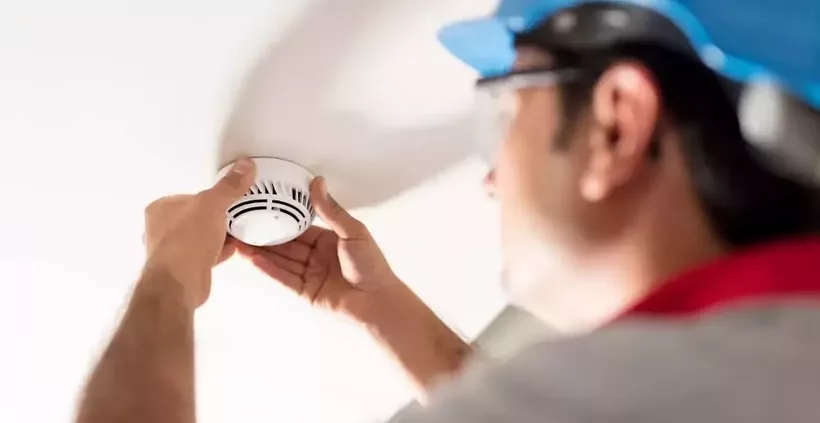
A guide in smoke detectors for your smart home
A traditional smoke alarm works fine, but lacks precision and automation features. Smart smoke sensors will proactively test your alarm every few months, are able to warn homeowners remotely and can be integrated into a larger security system (like security cameras and smart locks). In this article, we provide you with insights, installation advice and tips to optimally use smart smoke detectors.
Why choose smart smoke sensors over traditional smoke detectors?
Traditional smoke detectors are limited in their functionalities, because they will always just 'detect smoke'. Smart smoke sensors offer an integrated solution for a safe home at any time:
- Remote control: Not at home? With a classic smoke sensor, you won't be notified of smoke or fire detection until you get a phone call from your family or neighbors. By making your smoke units smart, you'll be alerted immediately through your smartphone.
- Real time notifications and testing: Traditional smoke sensors inform homeowners of a malfunctioning, such as a low battery or excessive dust, by sounding an alarm. Often times it's the same alarm when smoke is detected. Smart smoke detectors will test their units every month, and notify their users of the test results.
- Enhanced safety features: By connecting your smoke sensors to your smart security system or other smart devices, they can swiftly interact with each other. For example, when a peak in air density is detected, you'll receive a notification on your phone. Before calling anyone to check up on your house or apartment, you could quickly check your security cameras. Maybe it's a false alarm, like someone's cooking without using the fume hood?
So if you're looking for an integrated, proactive solution that will fit into your existing smart home in general, smart smoke sensors are your best option.

Best practices to install smart smoke sensors
1. Plan the placements of the smoke detector units
A strategic placement of your smart smoke detectors helps to ensure a complete coverage of your home. Start by installing at least one detector on each level of your home. In some countries like Belgium, The Netherlands and Great Brittain, homeowners are obligated by law to install a smoke detector on every story of their house. It's also recommended to have detectors near bedrooms and the kitchen.
As much as it's important that your smoke detectors cover the majority of your home, you should also avoid problematic areas. Zones that might trigger false alarms or intervene with the functioning of the sensors. Windows, air vents or bathrooms are not ideal to place your the units, as these areas are prone to humidity and dust.

2. Rely on the expertise of home automation installers
The installation process of smart smoke sensors becomes more complicated, when you want to integrate your units with an existing smart system, or connect them to other devices. That's why we suggest to rely on a professional installer. They have the expertise to calibrate the sensors, connect the detectors to your smart home system and often times offer a guarantee period.
Even though installing the smart smoke sensors yourself might sound interesting to save on installation costs, DIY installations could lack in its functionalities. Improper placements, or weak connections between your smart devices will leave you frustrated, instead of providing peace of mind.


